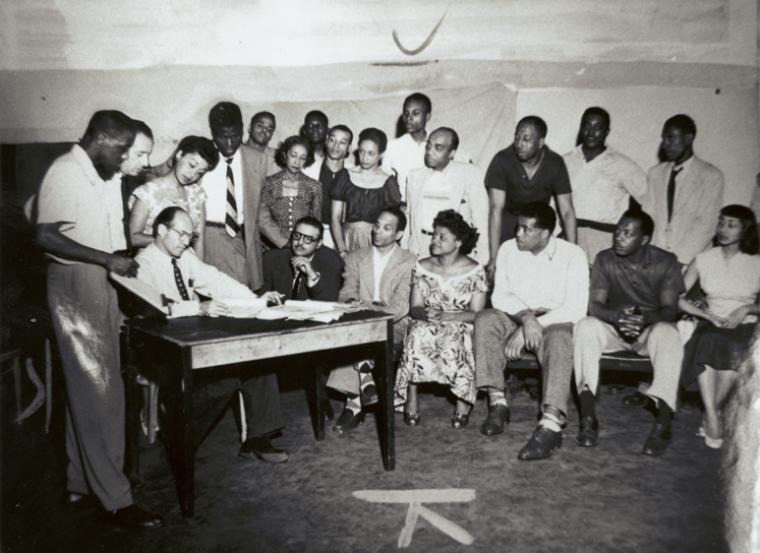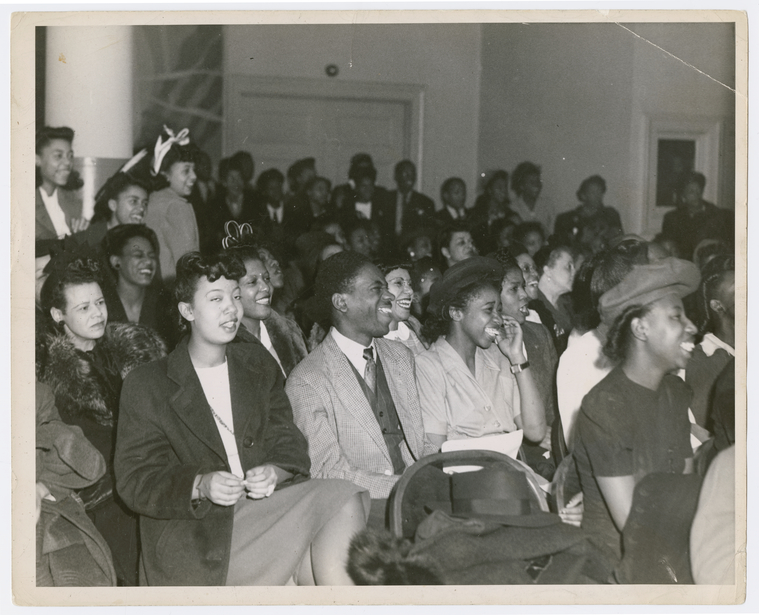Black Broadway Theatre History ~ Our Moments and Circumstances
“The drama of the Harlem Renaissance sought to overcome the decades-long hold on the popular imagination exerted by blackface minstrelsy, which had created a powerful range of damaging stereotypes that constrained the theatrical presentation of Black life. Critics, playwrights, and actors debated the function of drama, as well as its subject matter and the style of presentation of the “Negro experience.” A number of white-authored plays about Black life gained great critical and box-office success from the late 1910s through the mid-1930s, giving valuable experience to Black performers and inspiring Black dramatists. Most notable were Ridgely Torrence’s Plays for a Negro Theater (1917), Eugene O’Neill’s The Emperor Jones (1921), Green’s In Abraham’s Bosom (1927), and Marc Connelly’s The Green Pastures (1929). These plays also moved some Black playwrights to present more authentic examples of what were called “Negro plays.” New all-Black theatre groups arose in several cities.“
Federal Theatre Project Negro Unit
“Negro units, also called The Negro Theatre Project (NTP), were set up in 23 cities throughout the United States. This short-lived (1935-1939) project provided much-needed employment and apprenticeships to hundreds of Black actors, directors, theatre technicians, and playwrights.”
In 1935, in the middle of the Great Depression President Franklin Delano Roosevelt’s Administration created the Works Progress Administration Federal Theatre Project (FTP) as part of the New Deal economic recovery program. Negro units, also called The Negro Theatre Project (NTP), were set up in 23 cities throughout the United States. This short-lived (1935-1939) project provided much-needed employment and apprenticeships to hundreds of black actors, directors, theatre technicians, and playwrights. It was a major boost for African American theatre during the Depression era.
These units were situated throughout the country in four geographical sectors. In the East, the most productive units were located in New York City, New York, Boston, Massachusetts, Hartford, Connecticut, Philadelphia, Pennsylvania, and Newark, New Jersey. In the South, units were placed in Raleigh, North Carolina, Durham, North Carolina, and Birmingham, Alabama. In the Midwest, they were situated in Chicago, Illinois, Peoria, Illinois, and Cleveland, Ohio. In the West, units were in Seattle, Washington, and Los Angeles, California.
The best-known and most active FTP was The New York Negro Unit (1935-1939). Located at the Lafayette Theatre in Harlem, it staged some 30 productions. Two white directors, John Houseman, and Orson Welles, headed it in 1935. Three black directors, Edward Perry, Carlton Moss, and H. F. V. Edward replaced them in 1936. The unit’s most popular production was the Haitian, or “voodoo,” Macbeth (1935), an adaptation of Shakespeare’s play set in the Caribbean, under the direction of Wells. Other productions included Frank Wilson’s folk drama Walk Together, Children (1936), which described the forced deportation of 100 African American children from the South to the North to work for menial wages. Arna Bontemps and Countee Cullen’s The Conjur Man Dies (1936), a farcical mystery in three acts, dramatized Rudolph Fisher’s mystery-melodrama. Also in 1936, J. Augustus Smith and Peter Morrell co-authored Turpentine, a social drama in three acts and ten scenes that focused on the evils of the Southern labor camp system. George MacEntee’s The Case of Philip Lawrence (1937) was a courtroom melodrama. Haiti by William DuBois (not to be confused with W.E.B. DuBois), appeared in 1938 as a historical drama about the overthrow of a Haitian government. The Negro Youth Theatre, a popular subdivision of the New York Negro Unit, produced Conrad Seiler’s social drama Sweet Land (January 1937), which toured the streets of New York with the production during the following summer.
The Newark Negro Unit, in combination with the white New Jersey unit, produced one of the most successful FTP productions by a black author, The Trial of Dr. Beck. Hughes Allison’s play was a courtroom melodrama about color stratification among upwardly mobile Blacks. The Trial was produced at Union City and Newark, New Jersey in 1937 and then transferred to the Maxine Elliott Theatre on Broadway, where it ran for four weeks.
The Philadelphia Negro Unit produced Prelude in Swing, a 1939 musical documentary by Carlton Moss. The Boston Negro Unit was directed and run by Ralf Coleman, also a playwright and one of the leading performers. His brother Warren Coleman, and H. Jack Bates, the main resident playwright, assisted him. Broadway and film actor Frank Silvera was also a member and leading actor with this unit. Among the plays this unit produced (c. 1937-1938) were Bates’s Cinda, a black version of Cinderella, Dear Morpheus, a fantasy of love and marriage, Streets of Gold, Black Acres, The Legend of Jo Emma, The Lost Disciple, and Coleman’s Swing Song. The Hartford Negro Unit produced Trilogy in Black by Ward Courtney in 1937. The Raleigh Negro Unit produced Heaven Bound, a black morality play adapted by Laura Ward in 1936.
Shirley Graham (later Mrs. W.E.B. DuBois) headed The Chicago Negro Unit from 1936 to 1939. This unit rivaled the New York unit in the originality, popularity, and variety of its offerings. The Chicago unit’s most acclaimed production The Swing Mikado (1938), was a jazz version of the Gilbert and Sullivan operetta, which was a hit both in Chicago and New York City. Other productions by this unit included Lew Payton’s Did Adam Sin? (1936), Little Black Sambo (1937), a children’s operetta, and Theodore Ward’s drama on the Depression, Big White Fog (1938).
In the Far West, The Seattle Negro Unit’s (1936-1939) play production over four seasons (1936-1939) was boosted greatly by the presence of playwright-in-resident Theodore Browne. The unit staged four of his plays, including Lysistrata, an African American adaptation of Aristophanes’ comedy, and Natural Man, a dramatization of the John Henry legend. Go Down Moses was a play about Harriet Tubman and her involvement in the Underground Railroad. Swing, Gates, Swing was a musical revue. The Los Angeles Negro Unit produced two plays by black playwrights. John Henry by Frank B. Wells in 1936, about the legendary railroad worker, and Run Little Chillun’! (1938-1939), a revival of Hall Johnson’s folk drama that originally appeared on Broadway in 1933.
African American community theatres began to appear, revealing talents such as those of Ossie Davis and Ruby Dee. By 1940 black theatre was firmly grounded in the “American Negro Theater” and the Negro Playwrights’ Company.

Group portrait of members of the American Negro Theatre including Sidney Poitier (4th from left), Robert Earl Jones, seated (3rd from right), and Hilda Haynes, seated, middle. – Schomburg Center for Research in Black Culture

View of the audience at the American Negro Theatre – Schomburg Center for Research in Black Culture
After World War IIblack theatre grew more progressive, more radical, and more militant, reflecting the ideals of Back Revolution and seeking to establish a mythology and symbolism apart from White culture. Councils were organized to abolish the use of racial stereotypes in theatre and to integrate African American playwrights into the mainstream of American dramaturgy. Lorraine Hansberry’s A Raisin in the Sun (1959)and other successful Black plays of the 1950s portrayed the difficulty of maintaining an identity in a society where you were often degraded.
In the 1960s there was the emergence of a new African American theatre movement, which reflected the political and social conditions in contrast to its predecessors. Amiri Baraka (originally LeRoi Jones) was one of its strongest proponents. Baraka’s plays, including the award-winning Dutchman(1964), depicted Whites’ exploitation of Blacks. He established the Black Arts Repertory Theatre in Harlem in 1965 and inspired playwright Ed Bullins and others seeking to create a strong “Black aesthetic” in American theatre.
Loraine Hansberry and Alice Chidress…
The Negro Ensemble, Amas, The National Black Theatre, The New Federal Theatre, The Cherry Lan and American Place, Joseph Papp Public Theatre
During the 1980s and ’90s Ntozake Shange, August Wilson, Suzan-Lori Parks, and George Wolfewere among the most important creators of black theatre. Their plays celebrated the history of the Black/African American experience in the arts and culture at different points in US history.
Black Theatre
American Theatre
WRITTEN BY
The Editors of Encyclopaedia Britannica
Black theatre, in the United States, dramatic movement encompassing plays written by, for, and about African Americans.
The minstrel shows of the early 19th century are believed by some to be the roots of Black theatre, but they initially were written by Whites, acted by whites in blackface, and performed for White audiences. After the American Civil War, Black actors began to perform in minstrel shows (then called “Ethiopian minstrelsy”), and by the turn of the 20th century, they were producing Black musicals, many of which were written, produced, and acted entirely by African Americans. The first known play by a Black American was James Brown’s King Shotaway (1823). William Wells Brown’s The Escape; or, A Leap for Freedom (1858), was the first Black play published, but the first real success of an African American dramatist was Angelina W. Grimké’s Rachel (1916).
Black theatre flourished during the Harlem Renaissance of the 1920s and ’30s. Experimental groups and Black theatre companies emerged in Chicago, New York City, and Washington, D.C. Among these was the Ethiopian Art Theatre, which established Paul Robeson as America’s foremost Black actor. Garland Anderson’s play Appearances (1925) was the first play of African American authorship to be produced on Broadway, but Black theatre did not create a Broadway hit until Langston Hughes’s Mulatto (1935) won wide acclaim. In that same year, the Federal Theatre Project was founded, providing a training ground for African Americans. In the late 1930s, Black community theatres began to appear, revealing talents such as those of Ossie Davis and Ruby Dee. By 1940 Black theatre was firmly grounded in the American Negro Theater and the Negro Playwrights’ Company.
After World War II Black theatre grew more progressive, more radical, and sometimes more militant, reflecting the ideals of the Black revolution and seeking to establish mythology and symbolism apart from White culture. Councils were organized to abolish the use of racial stereotypes in theatre and to integrate African American playwrights into the mainstream of American dramaturgy. Lorraine Hansberry’s A Raisin in the Sun (1959) and other successful Black plays of the 1950s portrayed the difficulty of African Americans maintaining an identity in a society that degraded them.
The 1960s saw the emergence of a new Black theatre, angrier and more defiant than its predecessors, with Amiri Baraka (originally LeRoi Jones) as its strongest proponent. Baraka’s plays, including the award-winning Dutchman (1964), depicted whites’ exploitation of African Americans. He established the Black Arts Repertory Theatre in Harlem in 1965 and inspired playwright Ed Bullins and others seeking to create a strong “Black aesthetic” in American theatre. During the 1980s and ’90s August Wilson, Suzan-Lori Parks, and George Wolfe were among the most important creators of Black theatre.
Pages:


